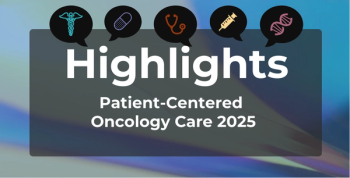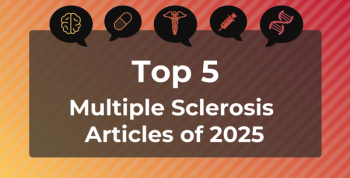
New Blueprint Guides Patient-Centered Research for More Equitable Health Care

Key Takeaways
- The blueprint emphasizes embedding patient perspectives in research to foster equitable, transparent, and responsive health care systems.
- It outlines 6 stages for integrating patient input, ensuring research reflects patient experiences, needs, and preferences.
The new Blueprint for Patient-Centered Value Research offers a roadmap for embedding patient voices throughout every stage of the research journey to foster more equitable, transparent, and responsive health care systems.
The Blueprint for Patient-Centered Value Research was released by the Center for Innovation & Value Research as a new foundational resource to provide practical guidance on embedding patient perspectives throughout the entire research lifecycle to foster more
“The Blueprint is rooted in the idea that patients should not only be the subject of research, but they should also help shape it,” Rick Chapman, PhD, chief science officer at the Center for Innovation & Value Research, said in a press release.
This resource aims to support patient-centered value research by providing guidance for a wide range of stakeholders, including researchers, patients, caregivers, advocacy groups, payers, health care providers, and life science companies.2 It encourages these stakeholders to strengthen patient partnerships in their research processes, emphasizing that meaningful engagement with diverse patients and caregivers is crucial for advancing value-based health care and research.
Multiple health-related disparities disproportionately affect certain demographic groups, especially racial and ethnic minorities, who are oftentimes socioeconomically disadvantaged.3 In 2019 alone, health disparities cost the US more than $450 billion, imposing substantial economic costs. Investing in preventive care, building community partnerships, and advancing technology can create a healthier future where everyone has access to the care they need to thrive.
The conceptual blueprint of value research focused on understanding the value of health care services, interventions, treatments, and policies.2 This includes comparative clinical effectiveness research, patient-centered outcomes research, cost-effectiveness analysis, health technology assessment (HTA) or value assessment, and patient-centered HTA or value assessment.
The "Blueprint for Patient-Centered Value Research" outlines 6 stages for integrating patient perspectives throughout the research process. This approach ensures patient input shapes research priorities, methodologies, and outcomes, aiming to authentically reflect patient experiences, needs, and preferences.
The 6 stages are:
- Initiation: This stage involves codeveloping research questions with patients and caregivers to address their direct needs and priorities, ensuring diverse voices are included to reflect community needs. It also includes establishing multistakeholder advisory groups with patients, caregivers, health care providers, and researchers to incorporate varied perspectives and exploring the patient journey to identify key points, challenges, and unmet needs related to treatment and care pathways over time.
- Planning: In this stage, researchers seek input from patients and caregivers to define the most meaningful outcomes, such as symptom relief or quality of life, aligning priorities with individual patient needs. It also involves collaborating with patients to assess what data to collect, determining the best methods for accurate reflection of their experiences, and ensuring diverse populations are represented in data sources. Finally, patients and caregivers review study protocols to ensure alignment with their needs and priorities.
- Execution: This stage utilizes both quantitative and qualitative methods, such as surveys and interviews, to provide a comprehensive view of patient outcomes and preferences, ensuring diverse patient perspectives are captured. Researchers analyze data collaboratively with patient partners to evaluate outcomes based on patient-centered goals. Early results are shared with patients and caregivers for feedback and validation to ensure findings align with their experiences and perspectives.
- Monitoring: During monitoring, researchers determine the relevance of study results to the broader patient community, assess implications for health care practice and policy, and tailor findings for diverse patient groups. Regular check-ins with patient partners are conducted to discuss progress, challenges, and necessary adjustments, ensuring alignment with evolving patient needs.
- Dissemination: This stage involves holding public comment periods, typically 30 to 60 days, to gather broad input and feedback, fostering transparency. Findings are presented to diverse audiences with plain language summaries to ensure accessibility and clarity. Patients and caregivers are invited to coauthor reports and publications, recognizing their valuable contributions and reinforcing the importance of patient collaboration.
- Assessment: The final stage focuses on discussing recommendations for future research with patient partners to identify gaps and suggest new study directions that address remaining questions. An ongoing feedback loop is maintained to assess what worked well, fostering adaptability and improvement based on real-time patient input. The impact of research findings on policies and coverage decisions is evaluated to ensure they support patient needs and priorities and to assess equity impacts across patient subgroups.
The Blueprint is intended to drive long-term change in how evidence is generated, evaluated, and applied in health care policy and practice, and it offers a shared foundation for inclusive, multistakeholder collaboration.1
“By centering patient priorities and experiences, we can create more relevant, trustworthy, and equitable evidence to inform health care decisions,” Chapman concluded.
References
- The Center for Innovation & Value Research releases Blueprint for Patient-Centered Value Research. Press release. Center for Innovation & Value Research. July 16, 2025. Accessed July 17, 2025.
https://valueresearch.org/press-release-the-center-for-innovation-value-research-releases-blueprint-for-patient-centered-value-research/ - A blueprint for patient-centered value research. Center for Innovation & Value Research. July 2025. Accessed July 17, 2025.
https://valueresearch.org/wp-content/uploads/2025/07/Blueprint-for-Patient-Centered-Value-Research_FINAL.pdf - Advancing HTA. Center for Innovation & Value Research. 2024. Accessed July 17, 2025.
https://valueresearch.org/what-we-do/advancing-hta/
Newsletter
Stay ahead of policy, cost, and value—subscribe to AJMC for expert insights at the intersection of clinical care and health economics.







































